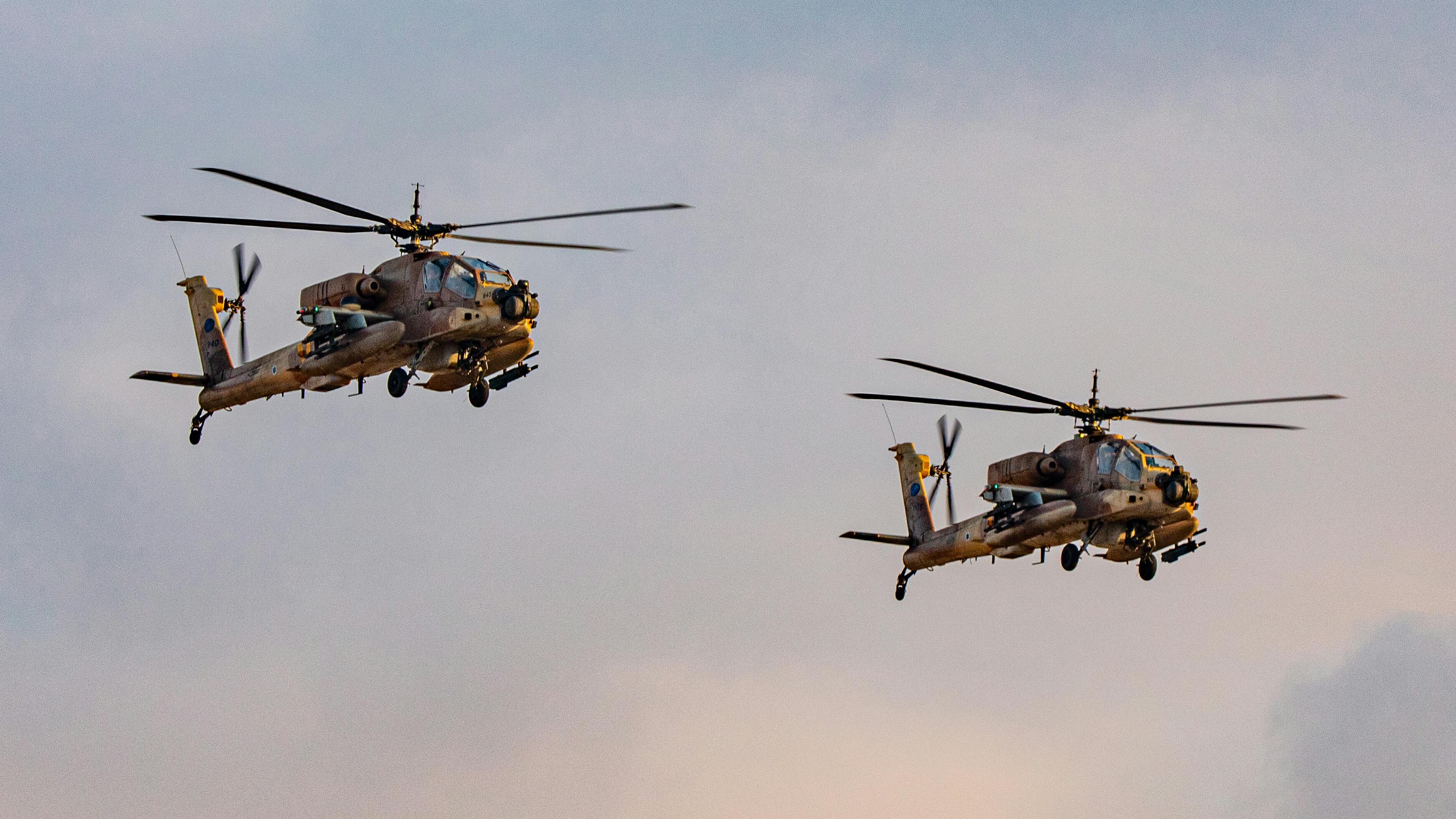'Identify and Intercept': Inside the IDF’s Helicopter Hunt for Iranian Drones

Thursday, 26 June 2025 | Over 12 intense days of fighting during Operation Rising Lion, the drone threat from Iran became one of the most dangerous challenges Israel had faced.
Hundreds of unmanned aerial vehicles (UAVs) were launched toward Israel—often simultaneously with heavy missile barrages—but were largely intercepted, many of them outside Israel’s borders. These interceptions were made possible through tight coordination between IDF combat helicopter squadrons, air defense systems and flight control personnel.
Maj. A., 29, a Tel Aviv native and Apache pilot in the IDF’s Magic Touch squadron, said that the campaign’s launch was relatively secretive. “It caught most of us by surprise, even though we had been preparing,” he said. “We didn’t know exactly when the order would come, but when it did, we reported immediately to the squadron. Since then, we’ve been here, managing the mission.”

A Game of Risk and Precision
The drone threat was not new to the squadron, but this time, it was on a different scale—more frequent, more intense and more complex. “The system faces all kinds of operational challenges. We’re learning as we go, defending the country’s skies and doing what we were trained to do,” A. explained.
Interceptions start with early detection by the IDF’s surveillance units, who coordinate with air defense and, when necessary, dispatch attack helicopters. “We have systems that can detect drones and weapons systems that can bring them down,” said A. The Apache was chosen for this mission because of its ability to fly low and slow, and because it can stay airborne for extended periods, making it ideal for handling multiple targets in a single mission.
“This isn’t a one-and-done situation,” A. said. “Iran launches more drones than all the other fronts combined.”
He described close collaboration with air traffic controllers: “We don’t find the drones on our own. Our excellent controllers locate and guide us to them. Once we’re on target, the mission is ours to complete.”
In some cases, helicopters tailed drones for long stretches before shooting them down, due to concerns about collateral damage. “People need to understand—it’s not about our ability. It’s about risk management,” he said. “Sometimes we wait because we can’t risk missing over a populated area, a road or a place where civilians are present. We wait—deliberately and carefully. We have all the time in the world.”
The combat helicopter squadrons had already been operating nonstop over threats from Gaza, Lebanon and now Iran. “This is what we do,” A. said. “Since October 7, there has been a combat helicopter over Gaza almost constantly, supporting troops. Same in Lebanon. Usually more than one helicopter.”
On the criticism of the air force’s performance on October 7, A. said: “People asked where the air force was. It was in the air. There was a failure that day, no question—but from that moment on, there were many successes in Gaza, Lebanon and now in Iran.”
Personally, A. has not left the base in weeks. “In wartime, there is no home. No family. No friends. I live here, and sleep next to the helicopters. Sometimes I’m already airborne when the drone enters our airspace.”
Reflecting on the mission, A. added, “You only realize the scale of historic events in hindsight. In the moment, you’re just a person in a cockpit, flying missions, eating, sleeping. But we’re ready for whatever comes next. From our perspective—it’s just the beginning.”
'We Never Compromise on Maintenance. It’s the Pilot’s Life'
Master Sgt. A., 43, a senior maintenance NCO—or “panchip”—from the Haifa Bay area, also shared his experience. “Since October 7, we’ve been operating nonstop—north, south, within and beyond our borders. Especially this past week and a half, with the Iranian front opening up, we’ve been working around the clock.”
A. ensures that the squadron’s helicopters are flight-ready. With the added flight hours and extended air time during this campaign, the workload has spiked dramatically. “But we’re responsible for getting the pilots back safely,” he said. “We don’t cut corners. Ever. No matter how complex the maintenance is, we get it done.”
While drone interception missions don’t require different prep than other operations, helicopters are armed specifically for them. “When the call comes, the helicopters equipped for this are the ones we scramble. When they return without their ammo, that’s the best feeling in the world,” A. said.
In closing, he expressed pride in the Air Force’s unique capabilities: “There’s nothing like our attack helicopter squadrons anywhere else in the world. Where else do 18-year-olds, fresh out of training, check and prep a helicopter for flight? That’s what warms my heart every time—this young, incredible generation, doing things I’ve never seen before.”
(This article was originally published by the Ynetnews on June 26, 2025. See original article at this link.)
https://www.ynetnews.com/article/hkbgyjqvge#autoplay
License: Wikimedia
Related Resources

Discover Your Purpose and God’s Heart For You
In today's divided, turbulent world, it's essential for the Church to rediscover God's heart. Our free e-book, authored by a seasoned expert with three decades of experience in Israel, delves deep into the teachings of Jesus (Yeshua) to reveal God’s principles of love and purpose. Learn how embracing these truths can bring significance and impact to your life, even amidst chaos. Subscribe now to receive your free copy and embark on a journey of transformation.




